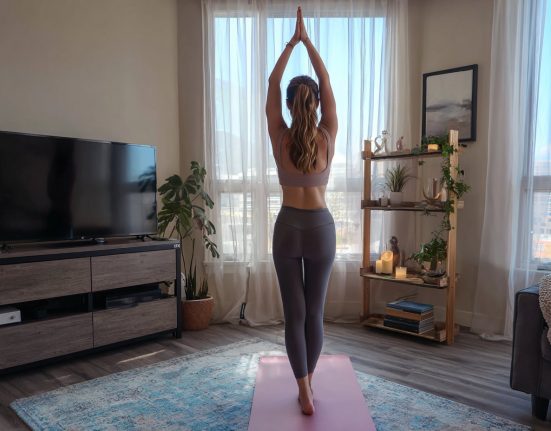Having gas can be embarrassing and excruciatingly uncomfortable. And, if you happen to have gas, it’s understandable to want to do what you can to fix the situation ASAP, if not sooner.
Enter the best positions to relieve gas. While the best way to relieve discomfort from gas is to do what you can to avoid developing it in the first place, certain movements can help you feel better once gas strikes.
“In general, there have been studies that have shown that physical activity helps with intestinal gas clearance, especially in patients with bloating,” says Lukasz Kwapisz, M.D., an assistant professor of medicine – gastroenterology at Baylor College of Medicine.
The basic idea, he explains, is that as you move, gas moves faster through your body—and then exits the premises. OK, so what are these moves and positions to relieve gas? Gastroenterologists break down how to fart (and relieve that discomfort) quickly.
Positions and moves to relieve gas
There are a few things you can do to relieve gas once you develop it. Try these expert-endorsed moves:
Walking
“Walking makes gas pass,” says Ellen Stein, M.D., a gastroenterologist and associate professor at Rutgers Robert Wood Johnson Medical School. “It’s because of the motion and legs moving around—that helps move the gas from higher up in the digestive tract into the rectum, where it can be released.”
Walking also “stimulates gastrointestinal motility,” says Randy Meisner, M.D., a gastroenterologist at Spectrum Health. Meaning, it gets the muscles in your gut moving—and that can help push gas out.
Laying on your side
Laying on your side is an easy thing you can try at home, Dr. Kwapisz says. “We have about 15 feet of our small intestine and three feet of our large intestine packaged into our abdomen,” he says. “That’s a lot of turns and twists to package all of that inside of us.” Because of this, he says, poop and gas can get trapped around some of those bends.
“Laying on your side helps with getting gravity on your side and changing the way our intestines are positioned within your abdominal cavity,” Dr. Kwapisz says. He recommends laying on your side for 15 minutes, moving your knees to your chest up and down a few times, and then flipping onto the other side and doing the same.
Squatting
This is really about the motion of moving your knees toward your chest, Dr. Meisner says. “That helps with expulsion,” he explains. This movement helps stimulate the way you’re supposed to poop and can also help push out gas. “It’s relaxing your colon to its more natural positioning,” he says.
Try doing 15 squats at a comfortable pace and seeing where that gets you.
Child’s pose
Child’s pose, in case you’re not familiar with it, is a yoga pose where you kneel on the floor with your toes together and your knees hip-width apart, bending forward so that your torso is between your knees and your arms are extended in front of you.
“This helps relax the pelvic floor, a network of muscles that holds everything in,” Dr. Stein says. Your pelvic floor is involved in the process when you fart and relaxing it can help ease things out. Get into position and hold it for 30 seconds or so. Then, try it again.
Pigeon pose
Another yoga pose, the pigeon pose involves sitting on the ground and bending your right leg toward your left hand. Stretch your left leg straight behind you, lower your hips toward the floor, and keep your hips square. If you can, lean forward and bend your torso over your right leg. Then, switch and do this on the other side.
“This also helps relax your pelvic floor,” Dr. Stein says. And, ultimately, it helps gas exit your body. You can also try holding this move for 30 seconds to a minute to see if it helps.
What causes gas?
Before we get into positions to relieve gas, it’s important to understand what causes gas in the first place. Once you’re armed with that knowledge, you can do your best to lower the risk you’ll develop it and have to deal with the consequences.
Gas usually gets into your gastrointestinal tract when you swallow air and when bacteria in your large intestine break down undigested carbohydrates, according to the National Institute of Diabetes and Digestive and Kidney Diseases (NIDDK). The NIDDK flags the following foods as the biggest potential gas-causers:
- certain fruits, like apples, peaches, and pears
- vegetables, especially broccoli, cauliflower, collard greens, and kale
- dairy products, like milk, ice cream, and yogurt
- whole grains, such as whole wheat
- drinks that contain high-fructose corn syrup
- candy, gum, or other products that contain sweeteners ending in “–ol,” like sorbitol, mannitol, xylitol, erythritol, and maltitol
That can lead to symptoms like burping, bloating, and passing gas.
When to see a doctor for gas
It’s important to point out that it’s normal to have some gas. “Everybody has gas and everybody poops,” Dr. Stein says.
But gas is a problem when it’s interrupting your daily life, you can’t control it or hold it in, and it’s painful, she says. Dr. Meisner recommends looking at your diet and weeding out foods that are known to cause gas (see our list above).
And, if that doesn’t help you get relief, it’s time to consult your doctor. They can do a slew of different tests to check for things like Celiac disease, small intestinal bacterial overgrowth (SIBO), and a food intolerance, among other things, Dr. Kwapisz says.
If there are concerns, I definitely would advise a doctor’s visit,” he adds.








